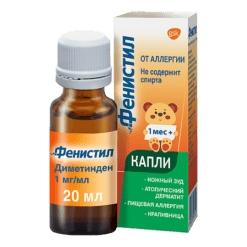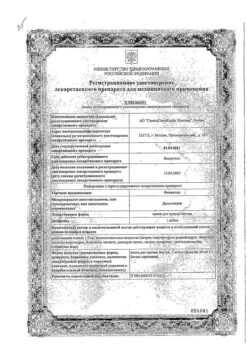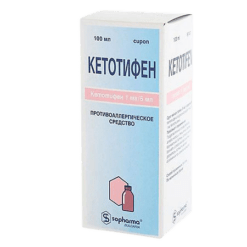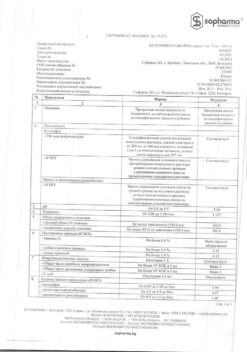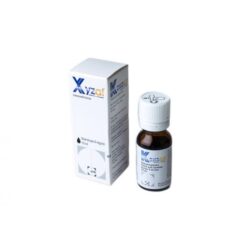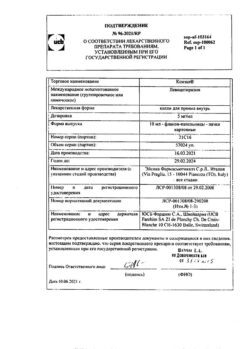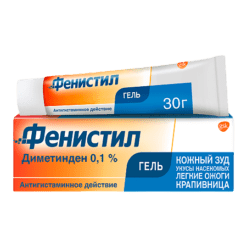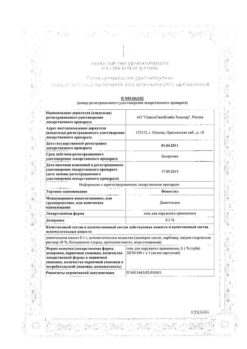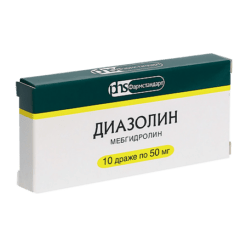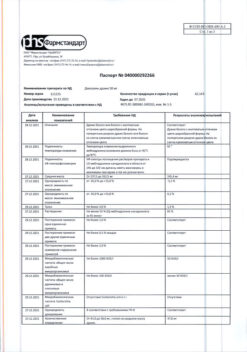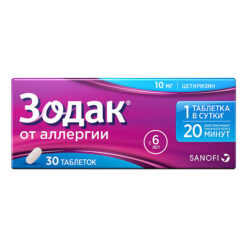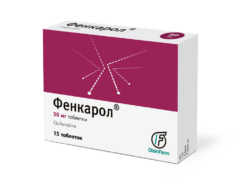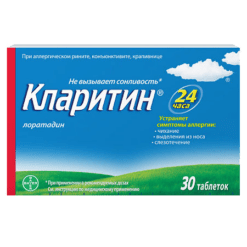No products in the cart.
Description
Pharmacotherapeutic group: anti-allergic agent – H1-histamine receptor blocker
ATX code R06AX13
Pharmacological properties
CLARISENS® syrup is an anti-allergic agent, selective blocker of peripheral H1-histamine receptors long-acting.
Pharmacodynamics
It has anti-allergic, antipruritic, antiexudative effects. Inhibits the release of histamine and leukotriene C4 from mast cells. It prevents the development and facilitates the course of allergic reactions. It reduces capillary permeability, prevents the development of tissue edema, relieves spasms of smooth muscles. The antiallergic effect develops quickly – 30 minutes after taking the drug and reaches a maximum after 8-12 hours. The effect lasts for a long time – up to 24 hours. The drug is not addictive and has practically no effect on the central nervous system.
Pharmacokinetics
Loratadine is quickly and completely absorbed in the gastrointestinal tract after oral administration. Time of reaching maximum concentration (TSmax) is 1.3-2.5 hours; eating slows it down by 1 hour. In blood loratadine is almost completely bound to proteins (up to 97%), does not penetrate through the blood-brain barrier, so it has no sedative effect. The maximum concentration of loratadine is reached after 8-12 hours.
In biotransformation the active metabolite is formed – descarboethoxyloratadine with the participation of cytochrome CYP3A4 isoenzymes and to a lesser extent CYP2D6. The elimination half-life is from 3 to 20 hours (on average 8.4 hours). Half-life of active metabolite is 8.8-92 hours (mean 28 hours); in elderly patients, respectively, 6.7-37 hours (mean 18.2 hours) for loratadine and 11-38 hours (17.5 hours) for metabolite. Equilibrium plasma concentrations of loratadine and its metabolite are reached on day 5 of administration.
Loratadine and its metabolites are excreted through the kidneys and intestines.
In patients with chronic renal insufficiency pharmacokinetics do not change. In alcoholic liver damage and in the elderly, the maximum concentration and half-limitation period increase (up to 50% in the elderly and in alcoholic liver damage in proportion to the severity of the disease).
Indications
Indications
Active ingredient
Active ingredient
Composition
Composition
How to take, the dosage
How to take, the dosage
Ingestion, before meals once a day. Adults and children over 12 years of age (with body weight over 30 kg) are prescribed 10 ml of syrup (2 measuring spoons, 10 mg/day). For children from 2 to 12 years of age with body weight less than 30 kg, 5 ml of syrup (1 measuring spoon, 5 mg/day). In case of hepatic insufficiency the drug is taken 10 ml (2 scoops) every other day.
Interaction
Interaction
CYP3A4 inhibitors (including ketoconazole, erythromycin), CYP3A4 and CYP2D6 inhibitors (cimetidine and others) increase the blood concentration of loratadine.
Microsomal oxidation inducers (phenytoin, ethanol, barbiturates, rifampicin, phenylbutazone, tricyclic antidepressants) reduce efficacy.
Special Instructions
Special Instructions
During treatment, caution should be exercised when driving motor vehicles and engaging in other potentially dangerous activities that require increased concentration and quick psychomotor reactions.
Contraindications
Contraindications
High sensitivity to loratadine, period of lactation, children under 2 years.
Side effects
Side effects
Pregnancy use
Pregnancy use
Similarities
Similarities
Additional information
| Shelf life | 2 years |
|---|---|
| Conditions of storage | In a dry, light-protected place at a temperature not exceeding 25 °C |
| Manufacturer | Pharmstandard-Leksredstva, Russia |
| Medication form | syrup |
| Brand | Pharmstandard-Leksredstva |
Related products
Buy Clarisense, 1 mg/ml syrup 100 ml with delivery to USA, UK, Europe and over 120 other countries.


